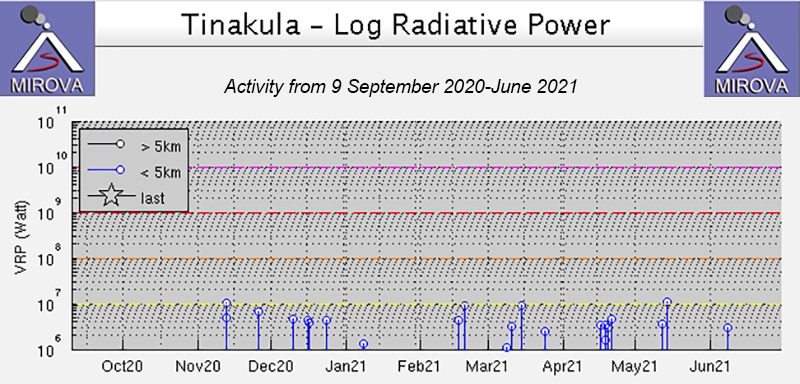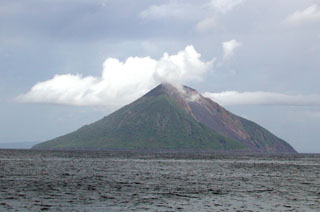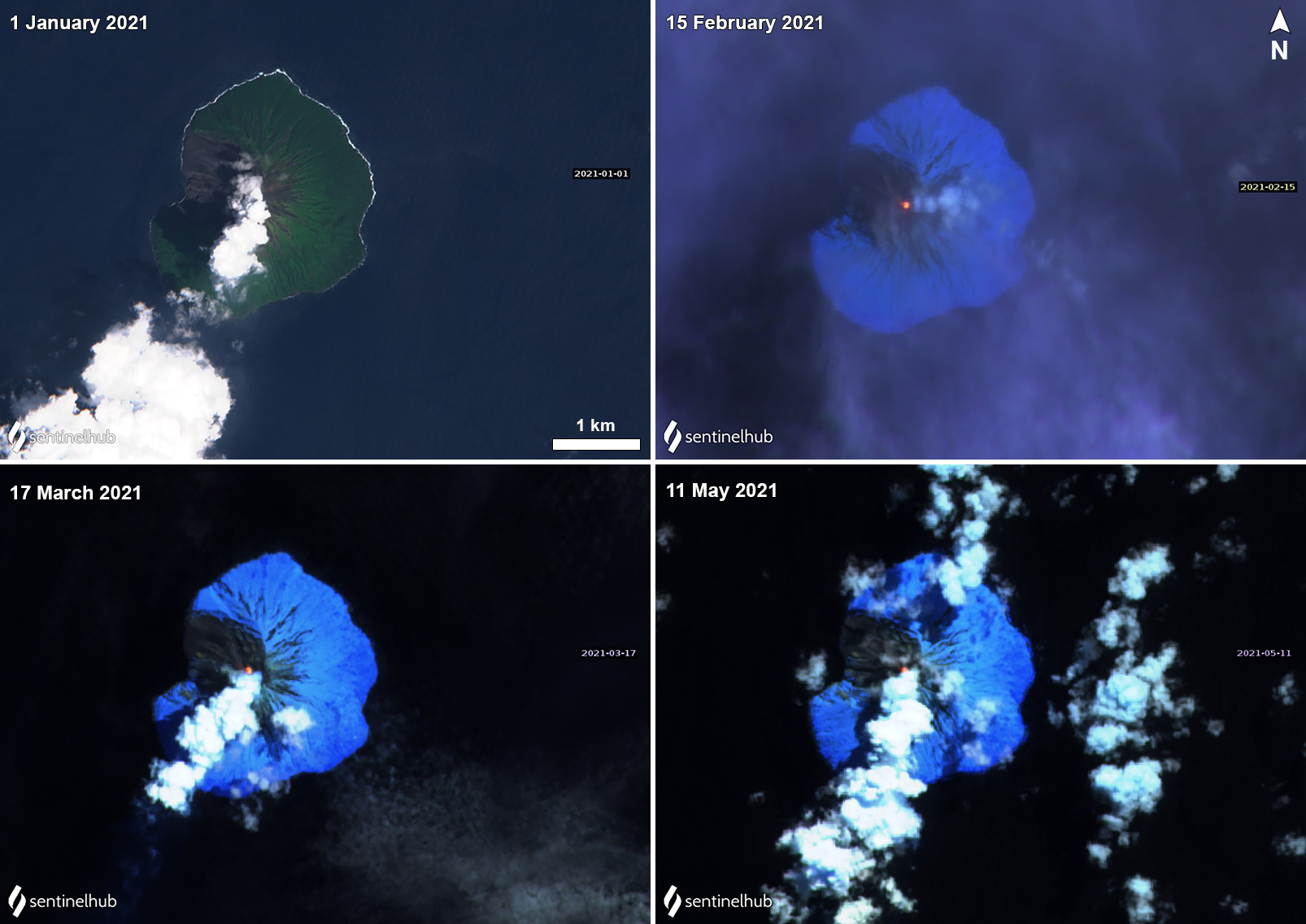Report on Tinakula (Solomon Islands) — July 2021
Bulletin of the Global Volcanism Network, vol. 46, no. 7 (July 2021)
Managing Editor: Edward Venzke.
Edited by Kadie L. Bennis.
Tinakula (Solomon Islands) Ongoing white gas-and-steam plumes and a persistent thermal anomaly during January-June 2021
Please cite this report as:
Global Volcanism Program, 2021. Report on Tinakula (Solomon Islands) (Bennis, K.L., and Venzke, E., eds.). Bulletin of the Global Volcanism Network, 46:7. Smithsonian Institution. https://doi.org/10.5479/si.GVP.BGVN202107-256010
Tinakula
Solomon Islands
10.386°S, 165.804°E; summit elev. 796 m
All times are local (unless otherwise noted)
Tinakula, located 100 km NE of the Solomon Trench at the N end of the Santa Cruz Islands, is a small 3.5-km-wide island with a breached summit crater that extends to below sea level. Its most recent eruption period began in December 2018 and has recently been characterized by intermittent gas-and-steam plumes and weak thermal anomalies (BGVN 46:01). Evidence of similar activity continued during this reporting period of January through June 2021 based on various satellite data; ground observations are rarely available.
Infrared MODIS satellite data processed by MIROVA (Middle InfraRed Observation of Volcanic Activity) showed fifteen low-power thermal anomalies during January through June 2021: one in early January, two in late February, four during March, five during mid- to late April, two during early May, and one in early June (figure 46). Some of these anomalies were also observed in Sentinel-2 infrared satellite imagery, occasionally accompanied by white gas-and-steam plumes drifting SW and E (figure 47).
 |
Figure 46. Low-power thermal anomalies at Tinakula were detected fifteen times during January through June 2021, based on the MIROVA system (Log Radiative Power). Courtesy of MIROVA. |
Geological Summary. The small 3.5-km-wide island of Tinakula is the exposed summit of a massive stratovolcano at the NW end of the Santa Cruz islands. It has a breached summit crater that extends from the summit to below sea level. Landslides enlarged this scarp in 1965, creating an embayment on the NW coast. The Mendana cone is located on the SE side. The dominantly andesitic volcano has frequently been observed in eruption since the era of Spanish exploration began in 1595. In about 1840, an explosive eruption apparently produced pyroclastic flows that swept all sides of the island, killing its inhabitants. Recorded eruptions have frequently originated from a cone constructed within the large breached crater. These have left the upper flanks and the steep apron of lava flows and volcaniclastic debris within the breach unvegetated.
Information Contacts: MIROVA (Middle InfraRed Observation of Volcanic Activity), a collaborative project between the Universities of Turin and Florence (Italy) supported by the Centre for Volcanic Risk of the Italian Civil Protection Department (URL: http://www.mirovaweb.it/); Sentinel Hub Playground (URL: https://www.sentinel-hub.com/explore/sentinel-playground).


